Ooni Fyra pizza oven review
The Ooni Fyra is a standout, 5-star pizza oven. It feels like there's nothing it can't do
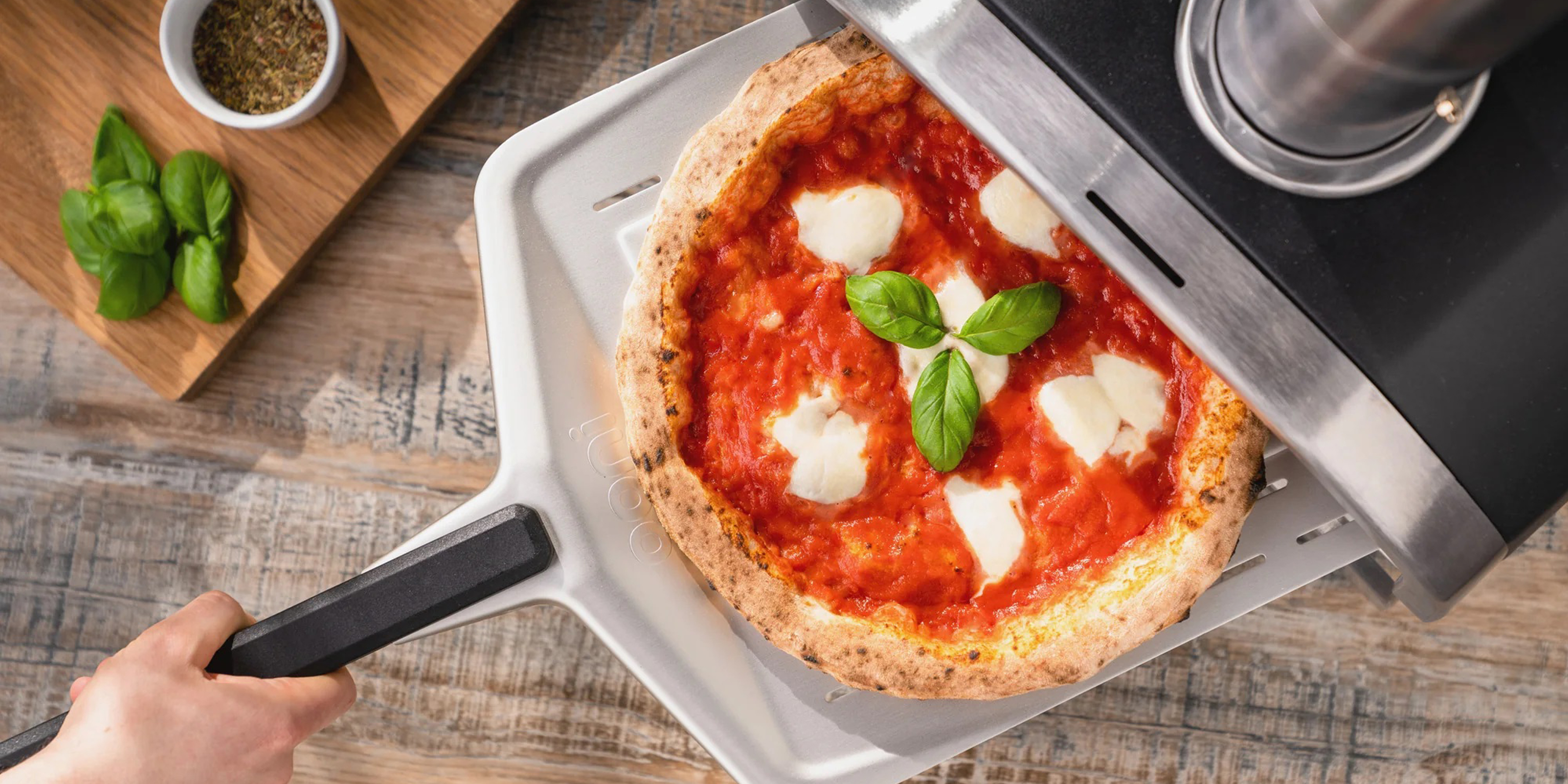
I’ve wanted to try an Ooni for a while and the Ooni Fyra didn’t disappoint. I’ve never been able to make pizzas this good in my oven and what’s more, I was surprised at its versatility and enjoyed using it to cook all sorts of other foods. I’ve quickly become a fan.
-
+
Compact and portable
-
+
Makes wood fired cooking simple and mess free
-
+
Achieves smoky wood fired flavours
-
+
Intuitive to set up and use
-
+
Fun outdoor cooking experience
-
-
Accessories sold separately
-
-
Requires more attention than a gas-fired pizza oven
Why you can trust Ideal Home
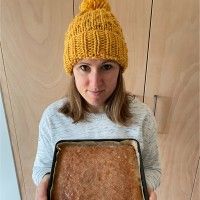
Pizza never tastes better than when cooked in an authentic wood fired pizza oven. But unless you’re willing to have one of these huge brick ovens built in your back garden, it’s something that has been out of reach for most of us, until recently. In the last few years, we’ve seen an explosion of at-home compact picks of the best pizza ovens that promise that even in the smallest backyard, you can create an incredible pizza.
I’m one of those people who took to making sourdough bread during the lockdowns and I tried my hand at sourdough pizza many times. But even with a pizza stone and whacking my oven up to its highest setting, I could never quite master it. That’s what led me to start browsing pizza ovens and dreaming of the perfect crust.
The Ooni Fyra 12 is the wood-fired Ooni that can cook 12-inch pizzas using small pellets of oak that mean you only need to wait 15 minutes before slinging in your first pizza. I’ve wanted to have a go with one of these for a while, so I was slightly concerned that it wouldn’t live up to my expectations. But I’m happy to say, I really like it and I now have a growing list of things I want to cook in it.
Ooni Fyra 12 product specs
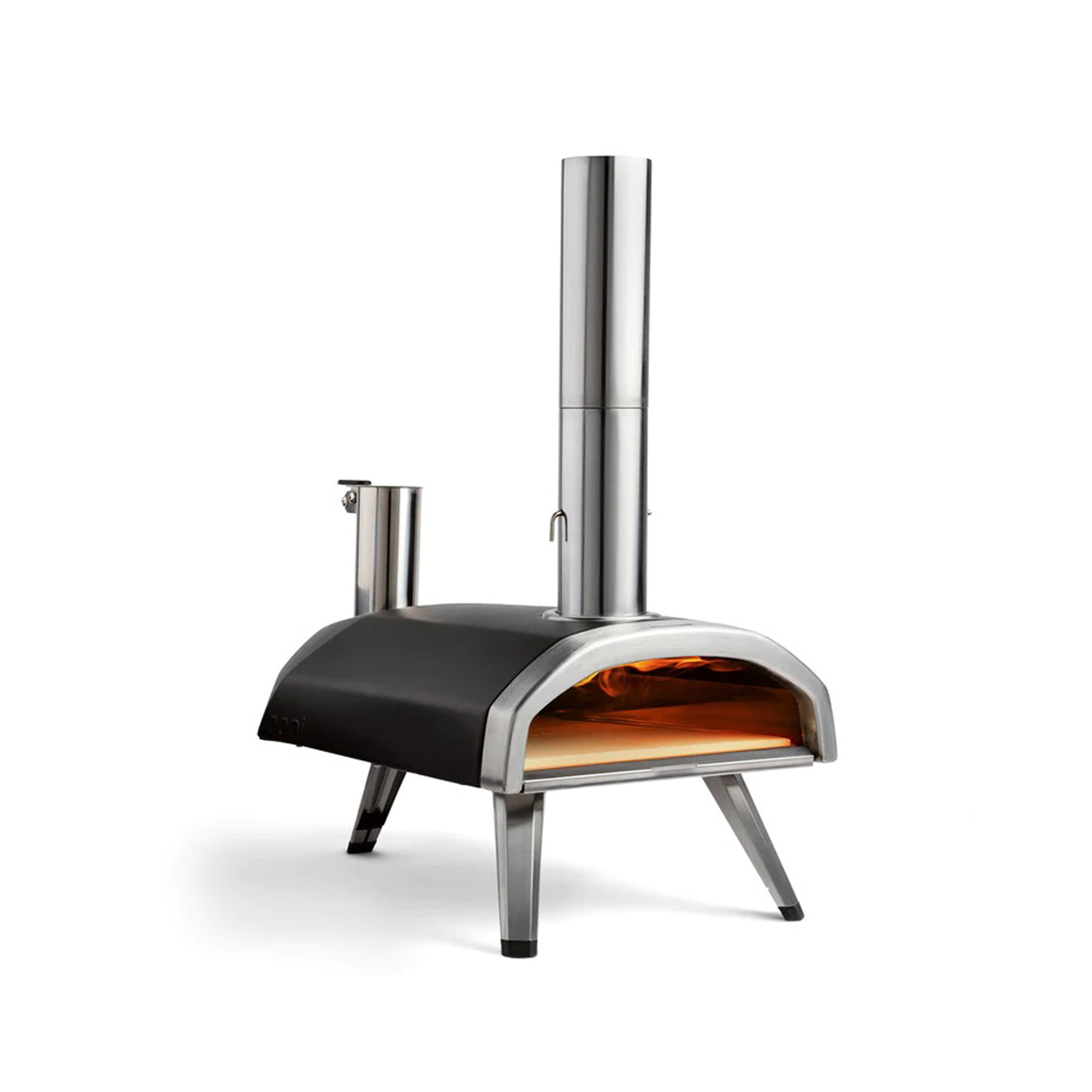
- Fuel: Wood
- Weight: 10kg
- Pizza size: 12 inch
- Preheat time: 15 minutes
- Dimensions: 74 x 39 x 72cm
- Warranty: 3 years
Who tested the Ooni Fyra?

After completing a Home Economics degree, Helen went on to work for the Good Housekeeping Institute and has been reviewing home appliances ever since. She lives in a small village in Buckinghamshire in the UK and reviewed the Ooni Fyra at the same time as the Ooni Koda, which helped her to determine the differences between the gas and the wood fired models.
Unboxing and setting up
The Ooni Fyra lifts easily out of its recyclable cardboard packaging with virtually all the parts tucked neatly inside. But there’s not really much assembly required, I simply had to unfold the legs, slide the pizza stone inside and pop the chimney and hopper into position on top. The fuel tray tucks into the back and there’s a little device called a flame keeper to position inside the oven at the top.

There are some thoughtful design aspects such as the lid of the chimney that doubles as a scoop for the wood pellets. The door uses a hook system to stay in place, but when you remove it, it can simply be hooked to the base of the oven, so there’s no need to find somewhere to place it. It also includes a little peep hole that you can look through to check on the flame.
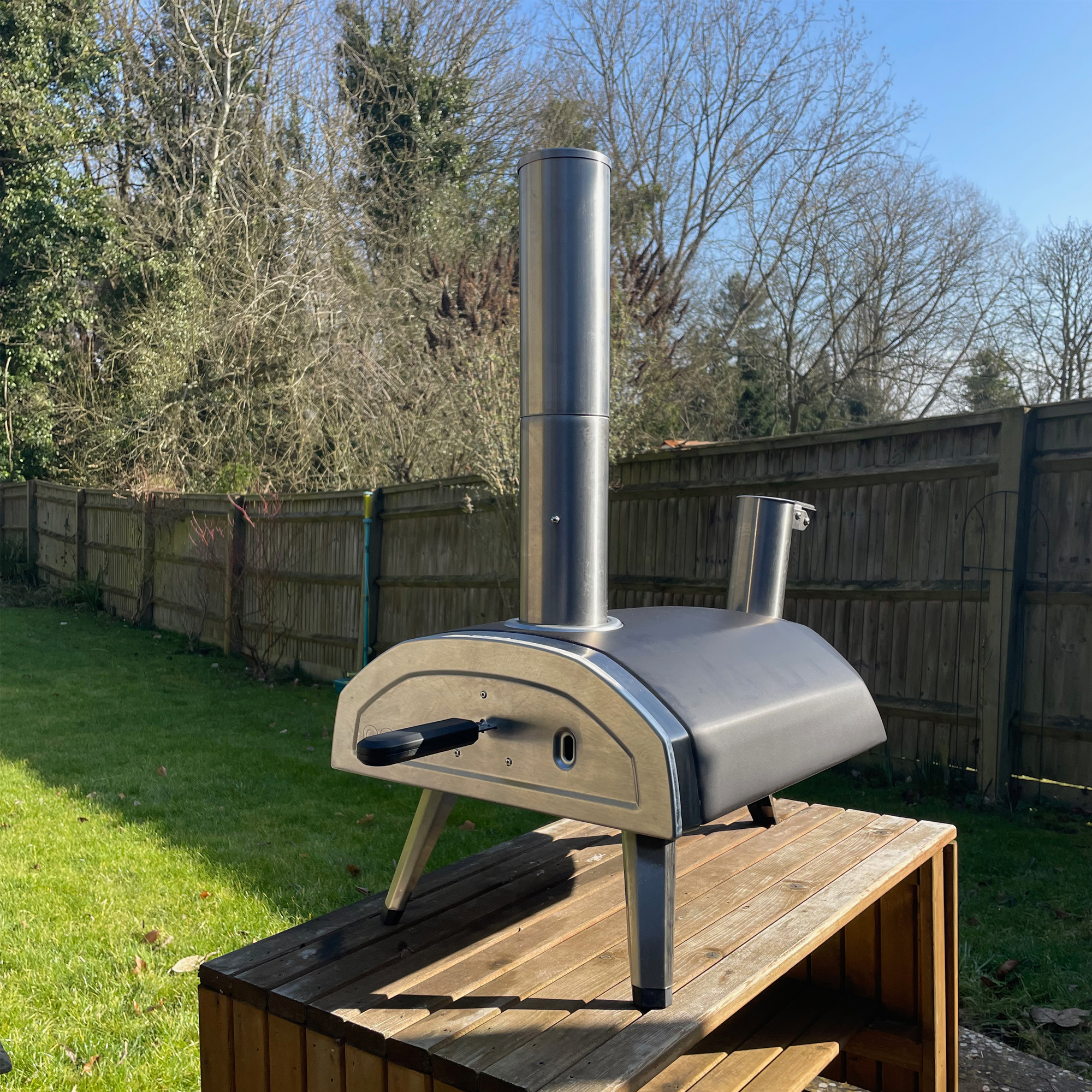
A simple turn-able vent in the chimney allows you to control airflow or build up smoke inside the oven for extra smoky flavour. And the wood hopper can be filled right up, this allows gravity to feed the wood pellets into the fire, which minimises the work involved in keeping the fire going.
Getting started
Okay, before I even attempted to light the Ooni, I read through all the tips in the manual, but I also watched some YouTube videos via the Ooni website. I’d advise making the most of these resources, as they contain valuable hints and tips on setting up the Ooni as well as cooking and making pizza.
Sign up to our newsletter for style inspiration, real homes, project and garden advice and shopping know-how
Ooni sent me some of their own brand wood pellets, which I used for the review. However I didn’t have any of their firelighters, which is something I’ll definitely be buying. Having said that, I managed to get the pellets lit using a small kitchen blowtorch (the kind you use on a crème brulee) . It just took a few minutes of patience.

I realised quite quickly that you need to keep an eye on the flame for the first couple of minutes, but once you’re sure it’s well lit, you can walk away from it. Then, when the fire is burning really ferociously, you can start adding pellets through the hopper, taking care not to snuff out the flames. I found that it was best to top up the hopper gradually until eventually it was feeding the fire automatically. But it takes a bit of practice to understand when you can fill it up.
I was surprised that despite the February weather, my pizza stone was hot enough, around 400- 500oC in just a little over 15 minutes. I should also point out at this stage that you’ll need an infrared thermometer, otherwise it’ll be impossible to tell whether the oven is ready to cook in. Ooni sell these separately, but trust me, you’ll need one, they make life so much easier.
Other things you’ll need that can be bought from Ooni or elsewhere are a peel, which is the giant spatula style utensil that you’ll use to place the pizza in the oven and to remove it too. A heavy-duty oven glove or fireproof glove is also advisable.
Making pizza
As much as I wanted to dive feet first into a sourdough experiment, I played it safe with a standard pizza dough in order to get to know the pizza oven first. There are plenty of recipes on the Ooni website and app and I’d recommend following Ooni’s tried and tested dough recipe to get you started. Failing that, you can buy ready-made dough through the Ooni website.
I found the Ooni recipe pizza dough was actually much easier to stretch into shape than pizzas I’ve made in the past. My other top tip is that it’s worth using semolina instead of flour to stop the dough sticking to the work surface and the peel.
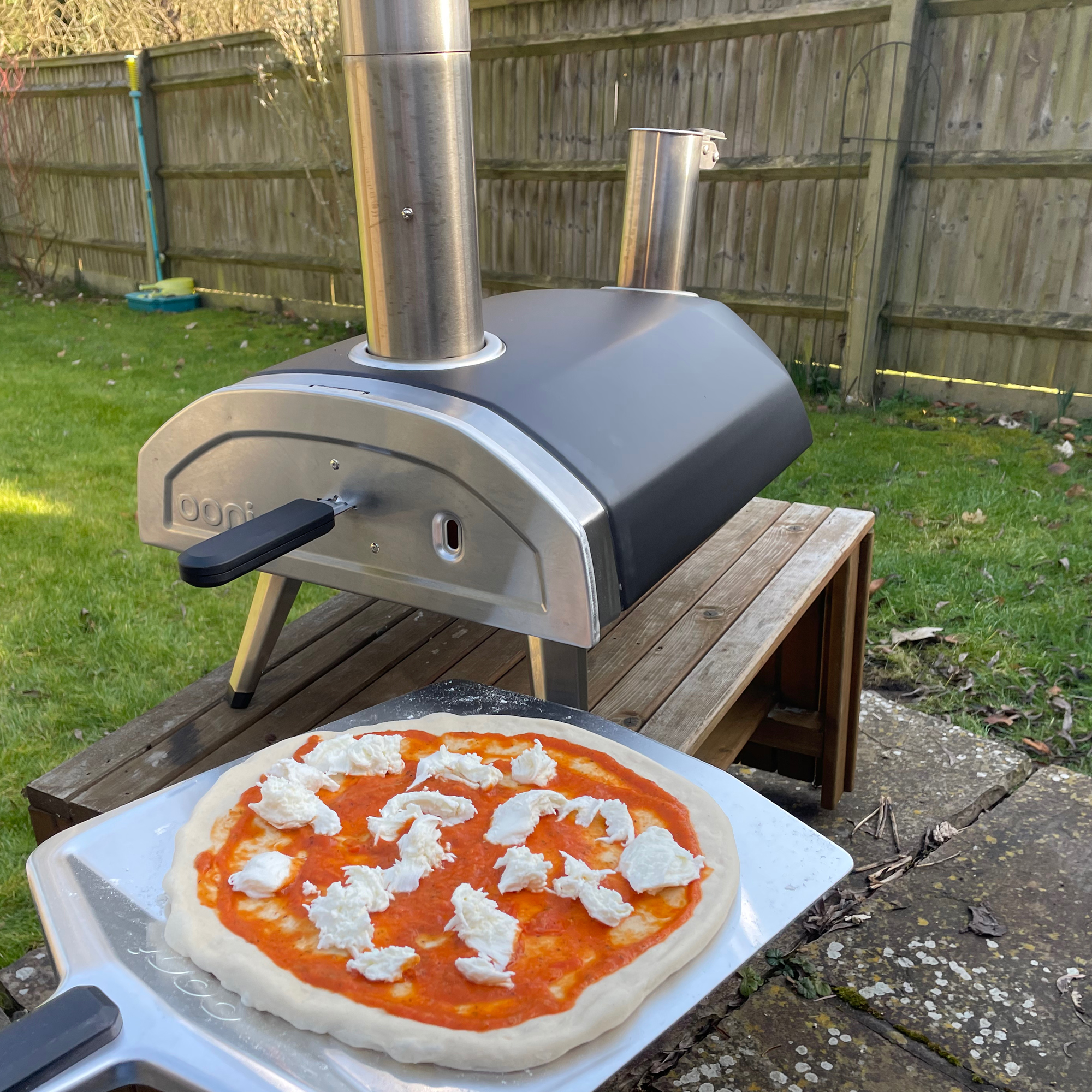
And once the dough is stretched, put it on the peel before adding the toppings. If you’ve got plenty of semolina on the peel and you’ve haven’t left the pizza on there too long, it should slide straight into the hot pizza oven. At this point, since it cooks so quickly it’ll need your full focus. Every 20-30 seconds it’ll need turning to ensure the crust gets evenly cooked and browned.

I didn’t need to make too many pizzas to get to grips with this method of cooking, it’s actually quite simple. The main mistake I made was being too impatient to cook the second pizza. You can’t just throw them in one after the other, the pizza stone needs five minutes or so between pizzas to get back up to the right temperature. So instead of making a different pizza for everyone at the table, sharing is the way to go.
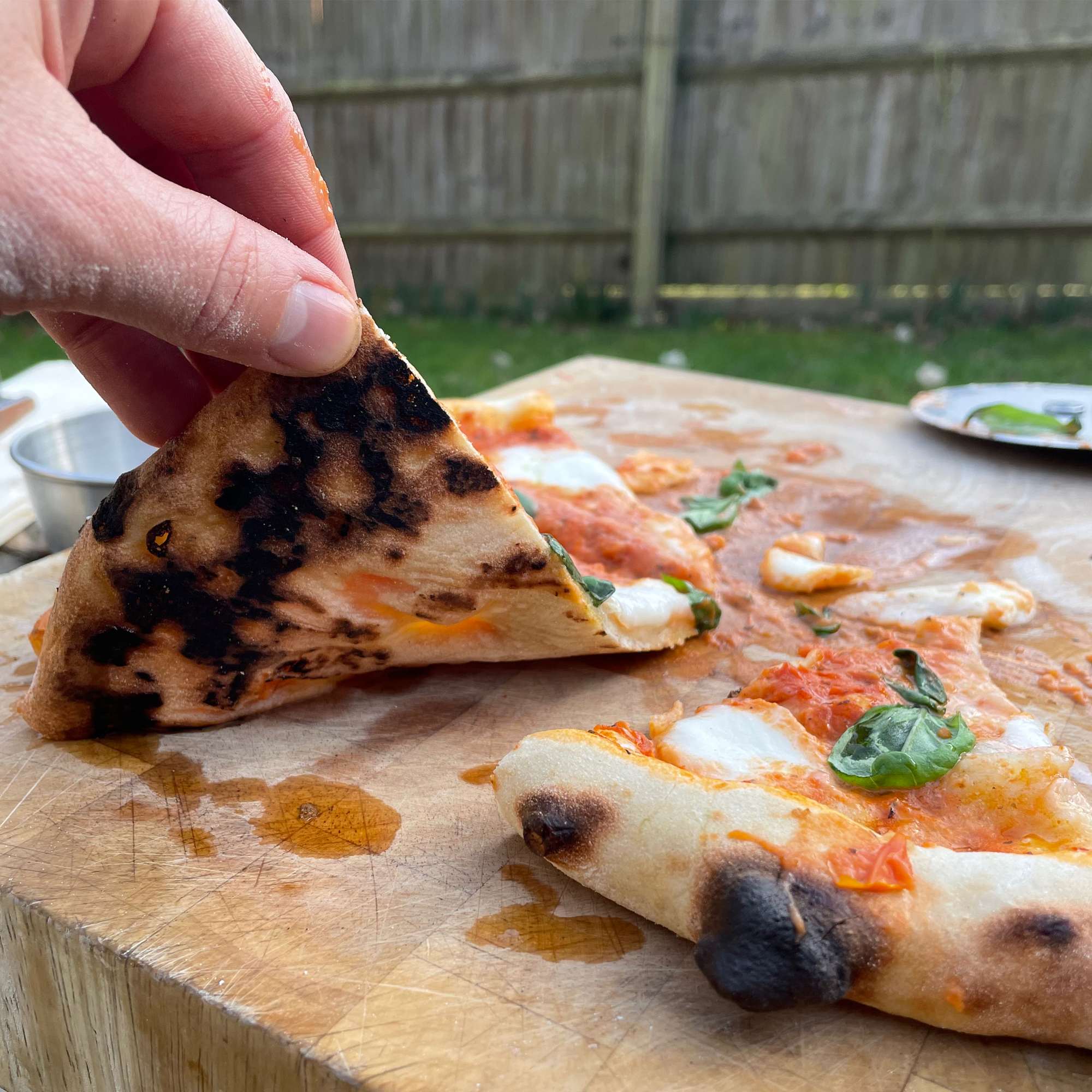
I made margarita pizzas, pepperoni pizzas and a cheesy garlic pizza bread and if you’re trying to make thin and crispy pizzas, less is definitely more when it comes to toppings.
The Ooni makes it pretty simple to make authentic crisp pizzas and these are by far some of the best pizzas I’ve ever made. When I got it right I was rewarded with pizza that had a crisp base and fluffy, charred crust. But it’s certainly a learning curve and there are a lot of variables, like the quality of the dough and the temperature of the oven, so you have to be prepared to have the odd less successful one along the journey!

Cooking other foods
One thing I hadn’t previously considered is that the Ooni can be used for way more than just pizza, and can kind of double up like one of the best BBQs. If you’re serious about using it to cook meats and vegetables, it’s worth getting a skillet. Thankfully I have one that just about fits. I preheated the skillet then added lamb chops for just three minutes on each side. I took them out and let them rest while I cooked some asparagus and broccoli in the same skillet.

The lamb had a charred but delicious fat layer and was pink and succulent inside. And the vegetables were smoky and lightly charred. Likewise, I found that boiling new potatoes and then throwing them in the hot skillet with some butter and garlic was a great way to create tasty, smoky roasted new potatoes and they took about 15 minutes.
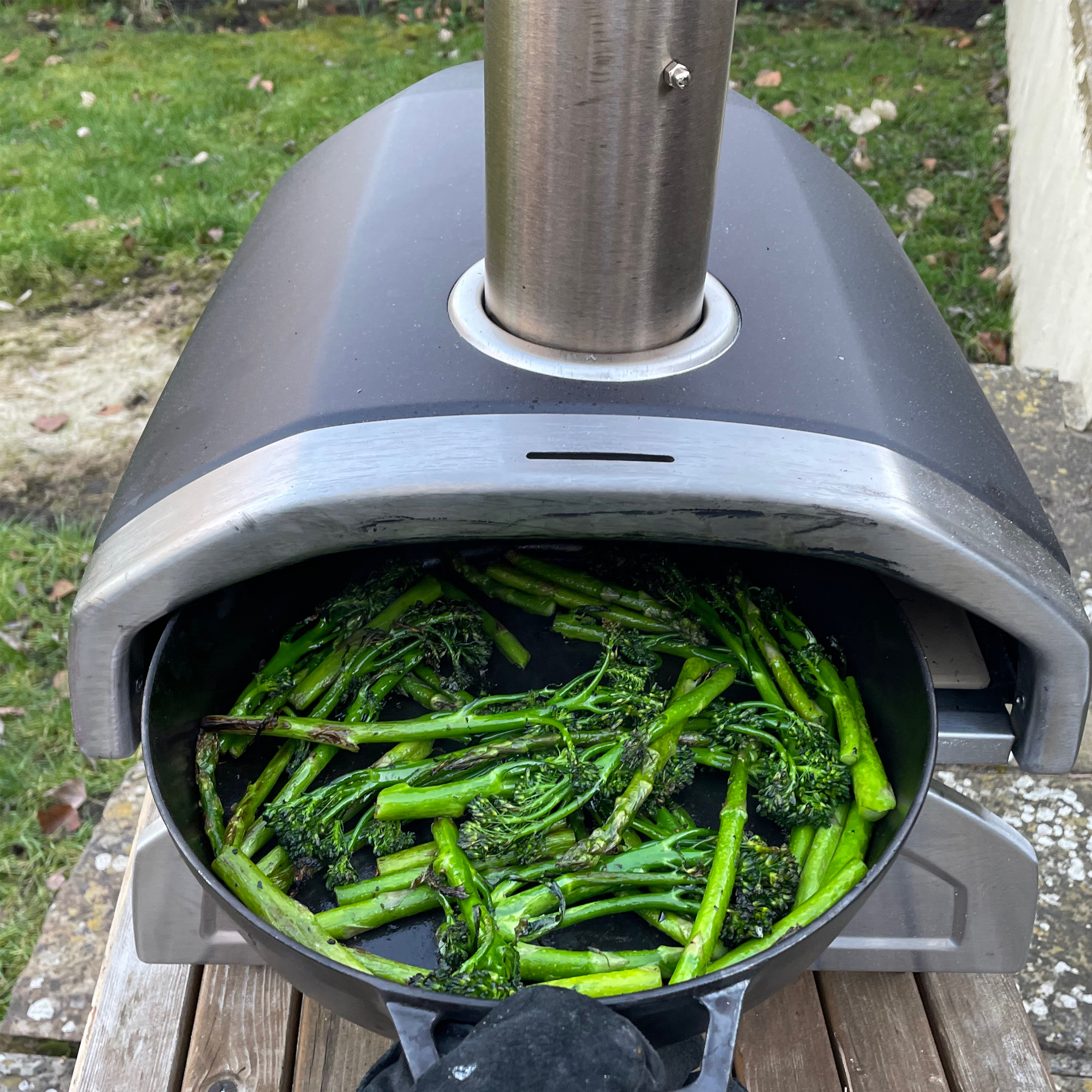
I’d have to say that I enjoyed cooking all these other foods just as much as pizza and I was pleasantly surprised at just how versatile the Ooni is.
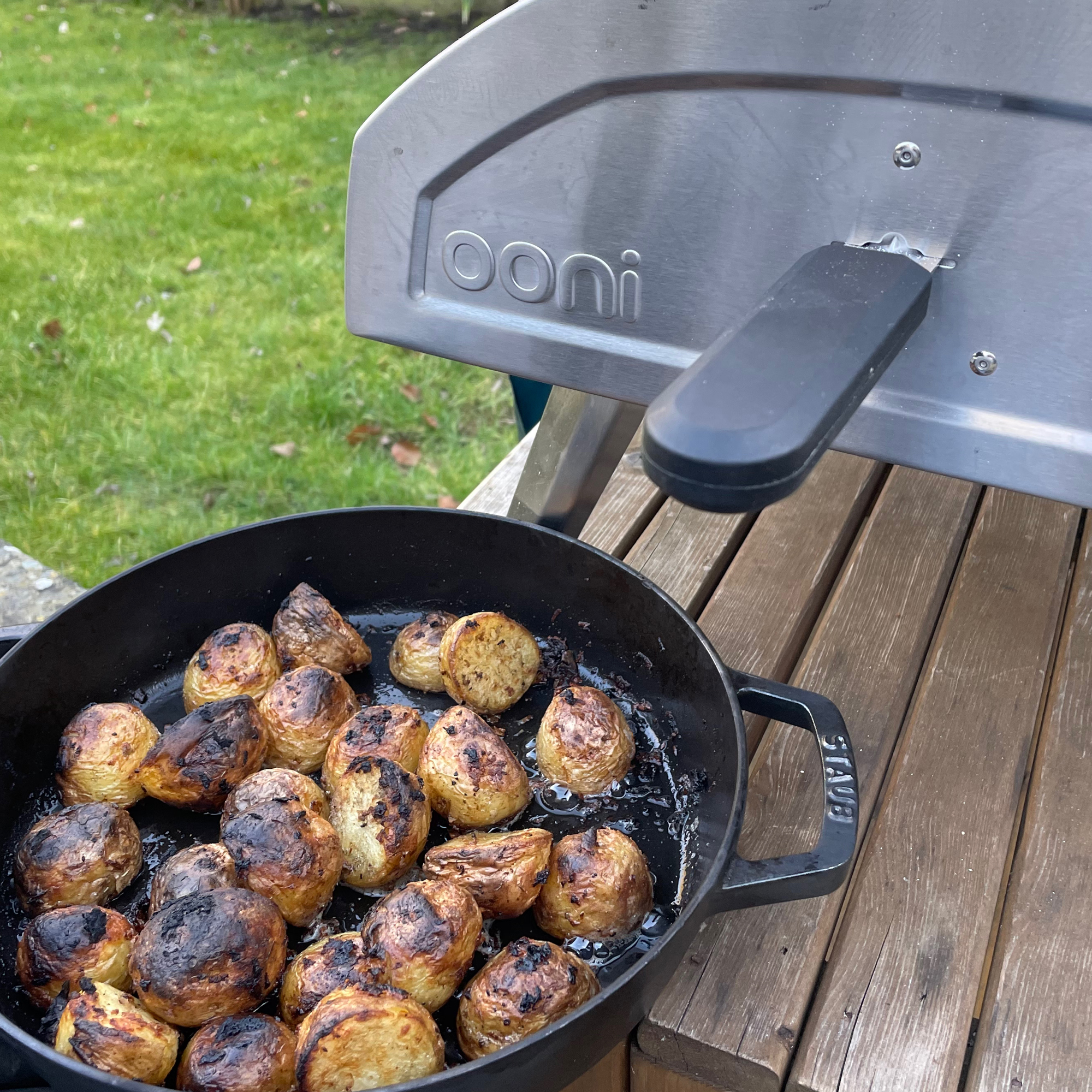
Cleaning and packing away
In my experience, once the last pizza was cooked, it took about an hour for any remaining wood to burn up and for the Ooni to completely cool. There’s not really any cleaning to do, just a small amount of ash to tip out of the fuel tray. The pizza stone doesn’t need cleaning, the high temperatures naturally clean and burn away residues. But it can be wiped with a bit of kitchen towel if you think it needs it.
For £39.99 you can buy a waterproof carry cover for it, which is brilliant if you plan to take it camping or to friends’ houses. But it’s not necessary if you’re going to store it in the shed or garage between uses.
How does it compare to other pizza ovens?

If you usually barbecue on gas, you might prefer the simplicity of clicking your gas bottle onto the Ooni Koda, which is the gas version. I reviewed it at the same time as the Fyra and achieved virtually the same results when cooking pizza, meat and more. It’s the same internal size, but the Koda doesn’t have a chimney or hopper so it’s actually more compact to store and transport. At £349 it is a little more expensive, but the only determinable difference between food cooked in the Koda as opposed to food cooked in the Fyra, is that you can’t achieve that wood smoke flavour in the Koda.
Alternatively, the Ooni Karu 16 is the bigger multi-fuel Ooni that offers all the top-notch features including the option to cook with either gas or wood. With its built-in thermometer and a pizza stone capable of cooking up to 16 inch pizzas, it’s the top-of-the-range Ooni. So, it’ll come as no surprise that at almost £700, it’s double the cost of the Fyra or Koda. But for real pizza connoisseurs, it might be worth the extra investment.
Should you buy the Ooni Fyra?
The Ooni Fyra is great fun and if you enjoy wood fired pizza as well as the challenge of mastering the techniques of pizza making, you’ll have an absolute blast creating pizzas for everyone who comes to visit. From buying ready-made dough direct from Ooni to creating the perfect homemade sourdough, the whole process can be as easy or as technical as you want to make it.
Having said that, there are certain skills you’ll need to master, such as stretching the dough, launching it off the peel and turning the pizza during cooking, as well as feeding the hopper. So you’ll need a willingness to learn, but I think a lot of these skills become instinctive quite quickly.
And don’t forget to factor in buying the must-have accessories such as a peel and infrared thermometer. I’d say check out the bundle deals that Ooni offer, they include all the essentials and are better value than buying everything individually.
About this review, and the reviewer
Thankfully, despite trying out the Ooni in February, Helen fired it up during an unseasonably warm couple of weeks. She used it to make several pizzas as well as plenty of other meals for herself and her husband according to how we test at Ideal Home. And this review feels like it’s just the start of the journey, next she’s planning on perfecting sourdough pizzas.

After completing a Home Economics degree, Helen went on to work for the Good Housekeeping Institute and has been reviewing home appliances ever since. She lives in a small village in Buckinghamshire in the UK, where she reviews all sorts of home and garden appliances for Ideal Home using her wealth of experience.